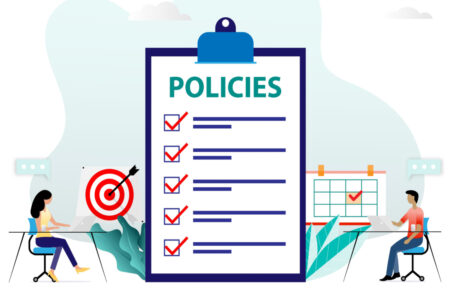How Your Intranet Can Deliver an Award-Winning Employee Experience
Technology is a key enabler in the employee experience. Learn how a next-gen intranet can help solve 6 of HR’s top challenges.


The workplace has changed dramatically in the last 20 years. The new digital era ushered in a world of possibilities in terms of innovation and the speed at which a company could do business. We also witnessed an upswing in remote work, the proliferation of apps, increased competition for talent, and a workforce made up of two distinct generations.
These workplace trends have put HR departments under increasing pressure in the areas of communication, collaboration, knowledge management, and employee engagement. To create an award-winning employee experience that would retain top talent, drives business results, and prepares the organization for the future.
There is no silver bullet to creating an award-winning employee experience, but in this digital era every HR leader needs to know how digital workplace tools and technology (including an intranet) can be an enabler for success. Let’s break it down into six key challenges facing HR — and how the right intranet technology can help.
6 HR challenges and how a next-gen intranet can help you solve them
Any new digital workplace solution should not only give employees a better experience, but also boost productivity and profitability for the organization. Here’s how a next-generation intranet can help you address your top HR challenges via one organization-wide platform.
1. Inform employees about the company vision and objectives
Communicating your company’s vision and objectives is critical to employee performance and engagement. Yet, with the average knowledge worker spending almost 20 percent of their workweek searching for and gathering internal information, frustration — not engagement — is the outcome.
Solution: A leadership center showcases everything leaders are doing and saying — and provides a path for employees to ask questions and leave comments. A virtual town hall bridges the gap between employees and senior leaders by ensuring no one misses out on the chance to get the latest company updates, share event information, and hear from employees.
2. Improve employee morale with employee recognition
72 percent of employees ranked recognition as having the greatest impact on engagement — yet only 30 percent of US employees agree they’ve received recognition for their good work in the past week.
Solution: A recognition center is one-stop solution for sharing company-wide kudos, peer nominations, publicizing promotions — and keeping talent feeling engaged and rewarded.
3. Effectively onboard employees.
When onboarding falters, productivity suffers and turnover increases. Losing new hires in the first couple of years is expensive — costing an organization up to three times an employee’s annual salary.
Solution: An onboarding center ensures employees feel supported during the first weeks and months on the job. An onboarding zone — complete with new employee checklists, a digital employee handbook, important links and forms, key contacts, and an FAQ section — empowers new hires for success from day one, and it fast-tracks the productivity of new recruits.
4. Provide self-service access to HR information
A survey by G&A Partners found that more than 70 percent of HR time is spent on administrative tasks — leaving very little time for strategic initiatives.
Solution: A next-generation intranet creates self-serve portals that satisfy most employee queries, housed in a one-stop digital destination. A digital employee handbook lets you store and share workplace policies and guidelines, and an online governance center is a single source for all policies, procedures and documents related to regulatory requirements.
5. Attract and retain talent with a healthy company culture
A strong company culture is a connected one. A Deloitte study found 57 percent of millennials rated culture as very important in choosing a position, ahead of financial rewards at 51 percent. To create a culture that attracts and retains top talent, employees need to feel a sense of belonging and purpose — empowered and engaged.
Solution: An interactive feedback center in your next-generation intranet gives employees a forum for sharing ideas and weighing in on products and services. A social center is your virtual water cooler for social interaction and sharing information about events, contests, and clubs.
6. Connect and engage remote workers
By 2020, half of all workers will work remotely most of the time, which offers economic, health, and lifestyle advantages for employees, and money saved for organizations. The downside? Remote workers can suffer from isolation and low engagement.
Solution: A next-generation intranet brings all employees together in a central digital destination to collaborate, socialize and find the people and information to do their best work. A mobile app lets remote employees connect and contribute from wherever they are, on any device.
Choosing the right technology
The key to getting buy-in from senior leadership for an intranet investment is to clearly demonstrate its value. How will it save the company time and money, maximize your existing technology investments, and improve employee engagement?
The right intranet technology offers a comprehensive and convenient suite of features and capabilities that makes employee experience a top business priority. That’s because an engaged workforce is more productive, and productivity boosts profitability.
HR leaders are in an ideal position to effect positive change for both employees and company leaders. But this transformation isn’t possible without first recognizing the need — backed by real data and insights – then choosing the best tools and technology to help you reach your goals.

We explore this topic and more — including six signs to look for in an intranet provider — in our latest guide.
Download the full guide here: A Next-Generation Intranet: The Secret to an Award-Winning Employee Experience.







